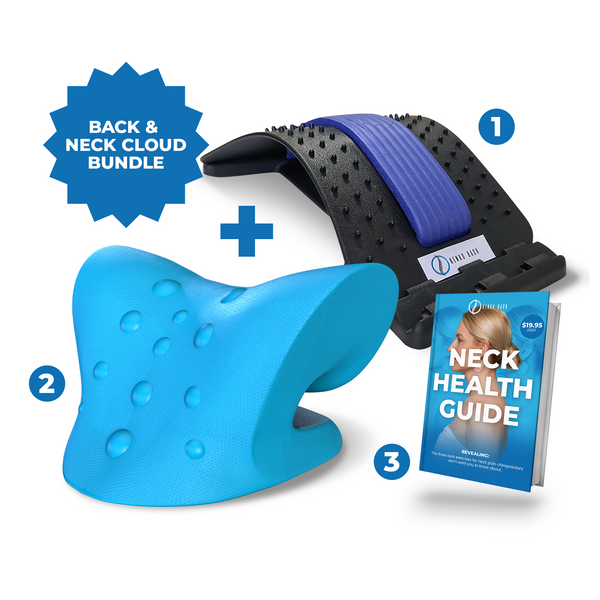Neck Discomfort in the Workplace: Identifying Threat Elements and Applying Ergonomic Solutions
Neck pain in the work environment is a common issue that can impact staff member well-being and productivity. By recognizing the numerous danger factors adding to neck pain and applying ergonomic solutions, organizations can produce an extra conducive work atmosphere. Recognizing these factors is vital in creating targeted techniques to ease pain and avoid future injuries. Resolving ergonomic concerns not only improves employee health however likewise advertises total work contentment and performance.
Usual Root Causes Of Neck Discomfort
Neck discomfort in the work environment is a prevalent problem that can be attributed to a number of usual causes. Furthermore, recurring movements such as constant flexing, twisting, or getting to can likewise contribute to neck discomfort over time.

Ergonomic Risk Variables
Poor functional designs in the office can dramatically add to neck discomfort among workers. Factors such as incorrect workdesk height, insufficient chair assistance, and unpleasant positioning of computer screens can all play a role in the advancement of neck pain. When employees are required to sit for extensive periods ready that strain their neck muscle mass, it can cause stiffness, discomfort, and a lot more significant musculoskeletal problems gradually.
In addition, bad ergonomic methods can lead to employees adopting unpleasant poses while working, such as craning their necks to see a computer screen or getting to uncomfortably for a mouse or key-board. neck cloud. These recurring movements and unnatural positions can place undue anxiety on the neck and bordering muscle mass, leading to pain and decreased efficiency

Desk Configuration Recommendations
When establishing up a workdesk in the workplace, it is important to pay interest to the functional designs of the setting. To decrease the risk of neck pain and discomfort, there are several desk setup recommendations that employees should think about. First of all, make certain that the computer system screen is placed at eye level to stop straining the neck by looking up or down. The keyboard and mouse ought to be placed at an elevation where the joints are curved at a 90-degree angle to advertise appropriate wrist positioning. Furthermore, the chair height ought to allow the feet to rest level on the flooring with upper legs parallel to the ground.
It is also vital to have appropriate illumination to decrease eye strain, as scrunching up your eyes or leaning ahead can lead to neck stress. Organize the workdesk design to keep regularly utilized items within arm's his explanation reach, restricting the requirement for recurring turning or reaching motions. By implementing these workdesk configuration recommendations, workers can create an extra ergonomic work area that sustains neck health and reduces the danger of creating occupational neck discomfort.
Extending and Exercise Tips
To maintain flexibility and decrease muscle stress in the workplace, integrating extending and exercise regimens can be helpful for overall health and efficiency. Straightforward desk-friendly stretches can assist alleviate neck pain and protect against stiffness. Neck rolls, shoulder shrugs, and mild side-to-side neck stretches are effective in soothing tension. Furthermore, including exercises like chin tucks, shoulder blade squeezes, and top back stretches can help enhance muscle mass that support great stance.
Establishing suggestions or making use of applications that motivate activity can aid develop a routine stretching routine. By prioritizing these activities, you can boost your physical health, lower the threat of neck discomfort, and improve your general efficiency in the workplace.
Significance of Regular Breaks
In a fast-paced workplace where needs can add to physical stress like neck pain, developing a regimen that highlights the significance of regular breaks is vital (neck cloud). Taking regular breaks throughout the day is essential for preventing and relieving neck discomfort. Prolonged durations of resting or repeated tasks can bring about muscular tissue tension and rigidity in the neck and shoulders. By including short breaks right into the job regular, employees can reduce the threat of establishing neck pain and enhance general convenience and performance.
Normal breaks enable staff members to rest their muscles, stretch, and change settings, stopping tightness and promoting better circulation. Motivating employees to take short breaks every 30-60 mins can help in reducing the build-up of tension in the neck and shoulders. These breaks can also act as a possibility for workers to practice relaxation techniques or mild neck stretches, better promoting musculoskeletal health and wellness. Applying a culture that values and focuses on regular breaks can have a substantial influence on minimizing neck discomfort and enhancing total health in the workplace.
Conclusion
In final thought, attending to ergonomic danger aspects and applying correct workstation arrangements are essential in reducing neck discomfort in the workplace. By promoting excellent stance, giving ample assistance, and encouraging regular breaks and stretches, organizations can create a healthier and more effective job atmosphere for workers. Focusing on staff member health through ergonomic neck cloud services is linked here key to preventing pain and boosting general workplace complete satisfaction.
Neck pain in the workplace is a prevalent concern that can impact employee health and efficiency. By identifying and addressing these usual causes of neck pain in the office, companies can take proactive actions to produce a more comfy and ergonomic job atmosphere for their employees.
Poor functional designs in the work environment can considerably contribute to neck discomfort among staff members. By executing these workdesk configuration suggestions, employees can develop a more ergonomic work space that supports neck wellness and reduces the danger of developing job-related neck discomfort.
Neck rolls, shoulder shrugs, and mild side-to-side neck stretches are effective in easing stress.